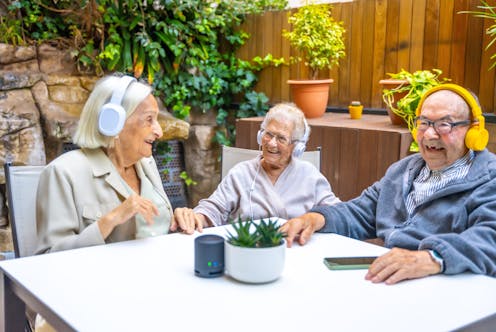Introduction: The Importance of Disability Accessible Travel in Australia
Disability accessible travel is an important aspect of tourism that allows people with disabilities to explore and experience new destinations. It is crucial for individuals with disabilities to have equal access to travel opportunities, as it promotes inclusivity and allows them to enjoy the same experiences as everyone else. Australia, with its stunning landscapes, vibrant cities, and rich cultural heritage, is a great destination for accessible travel.
Australia offers a wide range of accessible attractions, accommodations, and transportation options, making it an ideal destination for people with disabilities. The country has made significant progress in implementing accessibility standards and regulations to ensure that individuals with disabilities have equal access to public spaces, transportation, and accommodations. With its commitment to inclusivity, Australia has become a popular choice for travelers with disabilities.
Accessibility Standards in Australia: A Comprehensive Overview
Australia has implemented comprehensive accessibility standards to ensure that individuals with disabilities have equal access to public spaces, transportation, and accommodations. The Disability Discrimination Act (DDA) is a key legislation that protects the rights of people with disabilities in Australia. Under the DDA, it is illegal to discriminate against a person with a disability in areas such as employment, education, and access to goods and services.
In addition to the DDA, Australia has also developed the Disability (Access to Premises – Buildings) Standards, which provide guidelines for making buildings and facilities accessible to people with disabilities. These standards cover areas such as parking, entrances, ramps, and accessible toilets. The Australian Human Rights Commission provides information and resources on accessibility standards and regulations to help individuals with disabilities navigate their rights and responsibilities.
To find accessible information about travel destinations in Australia, there are several resources available. The Australian Tourism Data Warehouse (ATDW) is a comprehensive database that provides information on accessible attractions, accommodations, and activities across the country. The ATDW allows travelers to search for specific accessibility features, such as wheelchair ramps, accessible toilets, and hearing loops. Additionally, many tourism websites and travel agencies provide information on accessibility for specific destinations and attractions.
Wheelchair-Friendly Destinations: Exploring Australia’s Natural Wonders
Australia is known for its breathtaking natural wonders, and many of these destinations are wheelchair-friendly. National parks and nature reserves across the country have made efforts to provide accessible facilities and trails for visitors with disabilities. Some popular wheelchair-friendly destinations include the Great Barrier Reef, Uluru-Kata Tjuta National Park, and the Blue Mountains.
The Great Barrier Reef, one of the world’s most famous natural wonders, offers accessible snorkeling and diving experiences for people with disabilities. Many tour operators provide specialized equipment and assistance to ensure that individuals with disabilities can explore the vibrant underwater world of the reef. Uluru-Kata Tjuta National Park, home to the iconic Uluru rock formation, has accessible viewing platforms and trails that allow wheelchair users to experience the beauty of the Australian outback.
Tips for exploring Australia’s natural wonders in a wheelchair include researching accessibility information in advance, contacting tour operators or national park authorities to inquire about specific accessibility features, and considering the use of mobility aids such as all-terrain wheelchairs or mobility scooters. It is also important to plan for any necessary accommodations, such as accessible restrooms or picnic areas, and to be aware of any potential challenges, such as uneven terrain or steep inclines.
Accessible Accommodations: Finding the Perfect Place to Stay
Australia offers a wide range of accessible accommodations to suit the needs of travelers with disabilities. From hotels and resorts to bed and breakfasts and self-catering apartments, there are options available for every budget and preference. Many accommodations have made efforts to provide accessible features such as wheelchair ramps, accessible rooms with roll-in showers, and accessible parking spaces.
When searching for accessible accommodations in Australia, it is important to consider factors such as location, accessibility features, and amenities. Websites such as Booking.com and Expedia allow travelers to filter their search results based on accessibility features, making it easier to find suitable accommodations. It is also recommended to contact the accommodation directly to inquire about specific accessibility features and to ensure that they can meet your needs.
In addition to traditional accommodations, Australia also offers accessible camping and caravan sites for those who prefer a more outdoor experience. Many of these sites have accessible facilities such as accessible toilets and showers, and some even offer accessible cabins or tents. The Caravan and Camping Industry Association of Australia provides information and resources on accessible camping and caravan sites across the country.
Transportation Options: Navigating Australia’s Cities and Countryside
Australia offers a variety of transportation options that are accessible for people with disabilities. Public transportation systems in major cities such as Sydney, Melbourne, and Brisbane have made efforts to provide accessible features such as wheelchair ramps, priority seating, and audible announcements. Many buses, trains, and trams are equipped with accessible features to ensure that individuals with disabilities can travel comfortably.
In addition to public transportation, Australia also offers accessible taxi services and ride-sharing options. Many taxi companies have accessible vehicles with ramps or lifts, and some ride-sharing platforms have options to request accessible vehicles. It is recommended to book accessible transportation in advance, especially during peak travel times or for longer journeys.
For those who prefer to drive, Australia has a well-developed road network and many rental car companies offer accessible vehicles. It is important to check with the rental car company in advance to ensure that they have accessible vehicles available and to inquire about any specific accessibility features that may be required.
Accessible Tours and Activities: Making the Most of Your Trip
Australia offers a wide range of accessible tours and activities that allow travelers with disabilities to make the most of their trip. From guided tours of cultural and historical sites to outdoor adventures and wildlife encounters, there are options available for every interest.
Many tour operators have made efforts to provide accessible experiences for people with disabilities. For example, some tour companies offer accessible buses or vans with wheelchair lifts, while others provide specialized equipment or assistance for activities such as snorkeling, kayaking, or hiking. It is recommended to research and book accessible tours and activities in advance to ensure availability and to discuss any specific accessibility requirements with the tour operator.
Popular accessible tours and activities in Australia include guided tours of iconic landmarks such as the Sydney Opera House or the Great Ocean Road, wildlife encounters at sanctuaries or zoos, and cultural experiences such as Aboriginal heritage tours. It is important to check with the tour operator in advance to inquire about accessibility features and to discuss any specific needs or requirements.
Cultural and Historical Sites: Discovering Australia’s Rich Heritage
Australia is home to a rich cultural and historical heritage, and many of these sites are accessible for people with disabilities. From ancient Aboriginal rock art sites to colonial-era buildings and museums, there are opportunities to explore and learn about Australia’s history and culture.
Many cultural and historical sites have made efforts to provide accessible facilities and exhibits. For example, museums and art galleries often have accessible entrances, elevators, and accessible restrooms. Some sites also offer guided tours or audio guides that provide additional information and context for visitors with disabilities.
Popular accessible cultural and historical sites in Australia include the Sydney Opera House, the National Gallery of Victoria, and the Port Arthur Historic Site in Tasmania. It is recommended to check with the site in advance to inquire about accessibility features and to discuss any specific needs or requirements.
Tips for exploring Australia’s rich heritage in a wheelchair include researching accessibility information in advance, contacting the site or museum directly to inquire about specific accessibility features, and considering the use of mobility aids such as all-terrain wheelchairs or mobility scooters. It is also important to plan for any necessary accommodations, such as accessible restrooms or seating areas, and to be aware of any potential challenges, such as uneven terrain or narrow doorways.
Food and Drink: Savoring the Flavors of Australia
Australia is known for its diverse and vibrant food and drink scene, and there are many accessible options available for people with disabilities. From fine dining restaurants to casual cafes and street food markets, there are opportunities to savor the flavors of Australia in a wheelchair.
Many restaurants and cafes have made efforts to provide accessible facilities and seating areas. Some establishments have accessible entrances, ramps, and accessible restrooms, while others offer accessible menus or staff trained in assisting customers with disabilities. It is recommended to check with the restaurant or cafe in advance to inquire about accessibility features and to discuss any specific needs or requirements.
Popular accessible restaurants and cafes in Australia include Attica in Melbourne, Quay in Sydney, and Aria in Brisbane. These establishments offer not only delicious food but also stunning views and a memorable dining experience. It is important to make reservations in advance, especially for popular restaurants, and to inform the staff about any specific accessibility requirements.
In addition to restaurants and cafes, Australia also offers accessible food and drink experiences such as wine tastings, brewery tours, and food festivals. Many of these experiences can be enjoyed in accessible venues or with the assistance of accessible transportation options. It is recommended to research and book these experiences in advance to ensure availability and to discuss any specific accessibility requirements with the organizers.
Beaches and Water Activities: Enjoying the Great Outdoors
Australia is famous for its beautiful beaches and water activities, and many of these destinations are accessible for people with disabilities. From sandy beaches with accessible pathways to adaptive water sports and beach wheelchairs, there are opportunities to enjoy the great outdoors in a wheelchair.
Many beaches in Australia have made efforts to provide accessible facilities and amenities. Some beaches have accessible pathways or boardwalks that lead to the water, while others offer beach wheelchairs or beach matting to make it easier for wheelchair users to access the sand. It is recommended to research accessible beaches in advance and to check with local authorities or tourism websites for information on accessibility features.
Popular accessible beaches in Australia include Bondi Beach in Sydney, St Kilda Beach in Melbourne, and Surfers Paradise Beach on the Gold Coast. These beaches not only offer stunning views and opportunities for swimming and sunbathing but also have accessible facilities such as accessible parking, accessible restrooms, and beach wheelchairs available for hire.
In addition to beaches, Australia also offers accessible water activities such as adaptive surfing, kayaking, and snorkeling. Many tour operators provide specialized equipment and assistance to ensure that individuals with disabilities can participate in these activities. It is recommended to research and book accessible water activities in advance to ensure availability and to discuss any specific accessibility requirements with the tour operator.
Tips for enjoying the great outdoors in a wheelchair include researching accessibility information in advance, contacting local authorities or tourism websites for information on accessible beaches or water activities, and considering the use of adaptive equipment or assistance from tour operators. It is also important to plan for any necessary accommodations, such as accessible restrooms or changing facilities, and to be aware of any potential challenges, such as uneven terrain or limited accessibility at certain times of the year.
Tips and Resources for Disability Accessible Travel in Australia
Planning a disability accessible trip to Australia requires careful research and preparation. Here are some tips and resources to help you make the most of your trip:
1. Plan in advance: Research accessibility information for your chosen destinations, attractions, accommodations, and transportation options. Contact the relevant authorities or service providers to inquire about specific accessibility features and to discuss any specific needs or requirements.
2. Use accessible resources: The Australian Tourism Data Warehouse (ATDW) is a comprehensive database that provides information on accessible attractions, accommodations, and activities across the country. Many tourism websites and travel agencies also provide information on accessibility for specific destinations and attractions.
3. Consider mobility aids: Depending on your needs and preferences, consider using mobility aids such as all-terrain wheelchairs or mobility scooters to navigate uneven terrain or challenging environments. Some tour operators or rental companies may offer these equipment for hire.
4. Be prepared for challenges: While Australia has made significant progress in implementing accessibility standards, there may still be challenges or limitations in certain areas. It is important to be prepared for potential obstacles and to have alternative plans or accommodations in place.
5. Seek assistance when needed: Don’t hesitate to ask for assistance when needed. Many people are willing to help and provide support, whether it’s navigating a challenging terrain or accessing a facility. It is important to communicate your needs and requirements to ensure a smooth and enjoyable experience.
In conclusion, disability accessible travel is an important aspect of tourism that promotes inclusivity and allows people with disabilities to explore and experience new destinations. Australia, with its stunning landscapes, vibrant cities, and rich cultural heritage, offers a wide range of accessible attractions, accommodations, and transportation options. By implementing comprehensive accessibility standards and regulations, Australia has become a popular choice for travelers with disabilities. With careful planning and research, individuals with disabilities can make the most of their trip to Australia and enjoy all that the country has to offer.
Find out how Torongo Therapyplus can help you with your needs. Get in touch with us at smile@torongo.life, or call us on 02 8809 9965.































